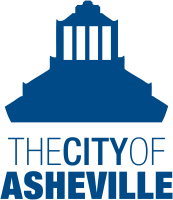French Broad Riverfront Parks Recovery
French Broad Riverfront Parks Recovery
The City of Asheville is restoring the storm-damaged parks and recreation system along the French Broad Riverfront after Hurricane Helene caused at least $25 million in destruction to the area that is home to 200+ acres of public parks, greenways and recreation facilities along the French Broad River.
Happening Now
The project team is currently evaluating input received through the Open House, online survey, Focused Discussions, and more. Stay tuned for updates.
View Presentation Boards from the Asheville Riverfront Recovery Open House held on December 10:
French Broad Riverfront Recovery Project Open House Presentation Boards - A
French Broad Riverfront Recovery Project Open House Presentation Boards - B
French Broad Riverfront Recovery Project Open House Presentation Boards - C
Asheville Riverfront Recovery Open House Open House Intro Presentation Boards
Asheville Riverfront Recovery Open House Activity Presentation Boards
A Transparent Approach to Building Back Resiliently
The City of Asheville is committed to keeping residents informed about this community investment every step of the way. Open communication is key to a successful project, and progress should be celebrated together as neighbors. We encourage the public to provide input in the current planning stage for these important park and infrastructure improvements. Input opportunities at this initial stage are intentionally designed to capture a wide understanding of public needs. The project teams will report back what they heard in early 2026. Future input opportunities will be more refined as the project progresses through later design stages.
Next Milestone: Construction
Using a phased approach, public access will be maximized throughout the duration of the project, allowing as many amenities as possible to be open for public use.
Background
On September 27, 2024, Tropical Storm Helene caused catastrophic damage to the region. Areas closest to the waterways were hardest hit with flooding. The 200+ acres of parks and recreation amenities, facilities and greenway network along the French Broad Riverfront was completely submerged during the flooding after the storm.
The project area encompasses five miles including portions on both sides of the river, stretching from the western side of City limits downstream from Hominy Creek to just below the Jeff Bowen Bridge (I-240). City-owned assets in the project area generally include:
327 and 314 Riverside Drive Office and Storage Facility
French Broad Riverfront Parks Recovery Map
Funding and Overall Recovery Strategy
The City of Asheville is sequencing recovery projects strategically to ensure an efficient and effective rebuilding process.
Cost recovery through federal disaster relief funding programs is essential in making this project possible. The City of Asheville seeks to accomplish this primarily through the FEMA Public Assistance Program, with significant supplemental funding from the Community Development Block Grant Disaster Relief (CDBG-DR) program. Additional funding sources may include the Hazard Mitigation Grant Program, grants from other agencies or partners, and local capital fund dollars.
The kick off of the French Broad Riverfront Parks Recovery project is one of many recovery projects the City is taking on after Tropical Storm Helene. Learn more about infrastructure recovery efforts and projects.
In conjunction with storm recovery efforts, the City continues to advance its Capital Improvement Plan as well as bond projects. The integration of these initiatives ensures a coordinated effort to strengthen Asheville’s infrastructure and economic stability.
For more information on storm recovery in Asheville, visit ashevillerecovers.org.
Frequently Asked Questions
Using a phased approach, public access will be maximized throughout the duration of the project, allowing as many amenities as possible to be open for public use. Depending on the severity of the damage, some parks and greenways facilities may be cleaned and stabilized enough to allow temporary reopening.
Cost recovery through federal disaster relief funding programs is essential in making this project possible. The City of Asheville seeks to accomplish this primarily through the FEMA Public Assistance Program, with supplemental funding from the Community Development Block Grant Disaster Relief (CDBG-DR) Program. Additional funding sources may include the Hazard Mitigation Grant Program, grants from other agencies or partners, and local capital fund dollars.
All proposed replacement or improvement components of this project will need to comply with the current state, local and federal codes and standards.
Public input and community collaboration will be essential for project success. The City of Asheville will work with the selected design team to map out public engagement opportunities and determine how input will be incorporated into the project. Please stay tuned for updates on public involvement opportunities, and subscribe to this project to receive project-related news via email.
This is a Metropolitan Sewerage District project that kicked off construction in 2025. Find out the latest information on their project page.
Contact
Pete Wall
Assistant Parks and Recreation Director
Dustin Clemens
Capital Projects Division Manager
